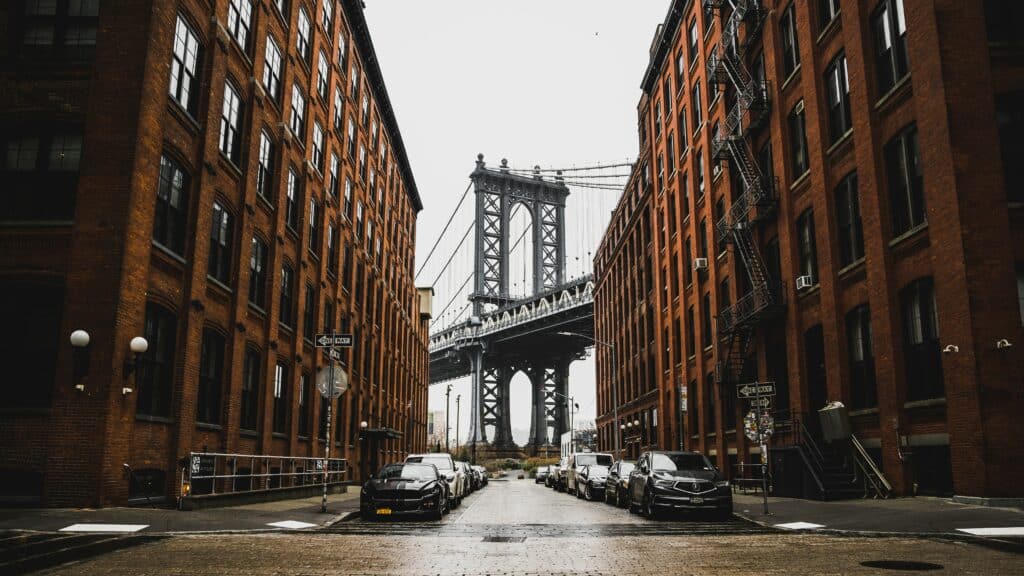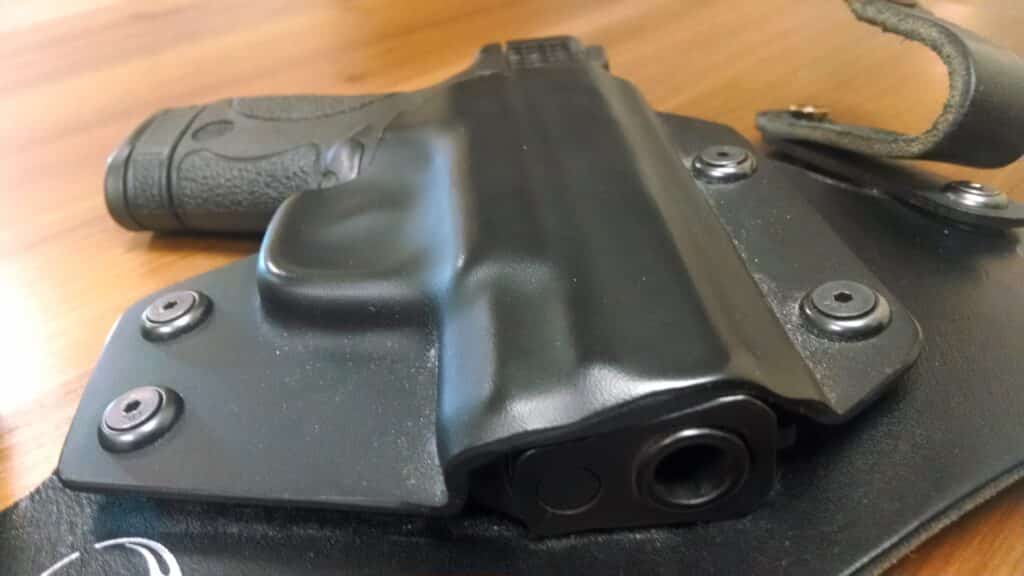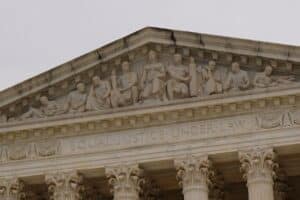New York got what it seemed to be asking for ever since the Supreme Court handed down its decision in Bruen: another loss in federal court.
A federal judge blocked enforcement of nearly all the controversial provisions of the state’s new gun-carry law. No more Time Square gun ban, no more social media check for a permit, no more gun ban on the subway.
Contributing Writer Jake Fogleman looks at what the decision, which has already been stayed and appealed, means for the foreseeable future. Then I explain why the judge came down the way he did and why his opinion will likely be very influential moving forward.
Plus, National Review’s Robert VerBruggen joins the podcast to talk about the murder spike and the FBI’s data problems.

Analysis: Why a Federal Judge Blocked New York’s Latest Gun Restrictions [Member Exclusive]
By Stephen Gutowski
We have another post-Bruen federal gun ruling. It may be the most significant one yet.
Not only will Judge Glenn Suddaby’s temporary restraining order against New York’s latest gun restrictions impact millions of people who live in that state, but it will likely also influence a host of other gun litigation across the country.
Suddaby’s opinion is one of the most expansive attempts to apply the Supreme Court’s new Bruen standard, which requires any law that implicates a Second Amendment right to closely match a historical analogue in order to survive scrutiny. The judge performed his own investigation of gun statutes from the period of the founding through the end of the Civil War and adoption of the 14th Amendment in 1868. He found there was little or no historical support for a majority of the most controversial provisions of New York’s law.
Suddaby gutted the “good moral character” gun-carry permitting clause. He blocked the social media check requirement, family information disclosure, and in-person application process. He also forced New York to allow licensed gun carriers into Times Square, on public transit, at venues that serve alcohol, private businesses that don’t have a “no-gun” policy, and entertainment venues.
“Although historical analogues certainly exist prohibiting carrying firearms in specific places, no historical analogues have been provided prohibiting carrying firearms virtually everywhere, as the CCIA does,” Suddaby wrote.
But he upheld a number of provisions as well. He said New York could restrict guns at polling places, schools, government facilities, public protests, and areas holding special government events.
For New York’s ban on guns in schools or government buildings, such as courthouses, Suddaby declined to look for historical examples of similar prohibitions. Instead, he cited the Supreme Court’s opinion in Heller as proof enough the provisions are constitutional.
“Fortunately, the Court need not collect in a footnote citations to the many historical analogues restraining the right to carry a firearm in ‘any place owned or under the control of federal, state or local government, for the purpose of government administration, including courts’ as stated in paragraph’ 2(a)’ of Section 4,” Suddaby wrote. “This is because the Supreme Court has already expressly acknowledged the permissibility of these restrictions.”
His reliance on dicta from Heller, which is non-binding, provides limited insight into how well those restrictions actually line up with the historical record. But it may tell us that federal judges are uninterested in finding out if they think the Supreme Court wants them to do so.
Either way, Suddaby was also able to identify some restrictions from that time he felt were close enough parallels to a handful of restrictions in New York’s law that they could stand. Those areas of his opinion, especially the ones where he places special exceptions on the upheld provisions, may offer the most insight into how future gun cases are decided under Bruen. That’s mainly because those are the areas where he puts the theory of historical analogues into practice.
His examination of the state’s ban on guns in places of worship is particularly instructive.
“Based on the historical analogues, it is permissible for New York State to generally restrict concealed carry in ‘any place of worship or religious observation’ (as contained in paragraph ‘2(c)’ of Section 4),” Suddaby wrote. “The Court emphasizes the word ‘generally’ because, of the six historical analogues the Court has located, half of them contain one or more of the following four exceptions: (1) for those bound by “duty” to bear arms at the place of worship; (2) for those possessing “good and sufficient cause” to carry a gun at the place of worship; (3) for those serving as “peace officers” at the place of worship; and (4) for those for whom the place of worship is ‘his own premises.’”
He concluded the historical record suggests there is a tradition of limiting guns in churches, but there’s also “a tradition of permitting an exception to this prohibition for those persons who have been tasked with the duty to keep the peace at the place of worship.” His solution is to limit enforcement of the prohibition to allow for that.
Suddaby’s approach differs from that of District Judge David Counts of Western Texas, who recently struck down the federal ban on those facing felony indictments from receiving guns but upheld the one on convicted felons. Counts’ analysis began at the same point as Suddaby’s, and he struck down the indictment-based ban for the same basic reason Suddaby blocked most of New York’s law: there is no historical basis for it.
However, Counts upheld the convicted felony gun ban using different reasoning than Suddaby. Where Suddaby cited specific gun laws from near the period required under Bruen, Counts instead looked at how some groups have been traditionally excluded from “the people,” including convicted felons.
“Indeed, there was a ‘longstanding’ historical tradition from the time of ratification that those convicted of a crime could be excluded from the right to vote,” Counts wrote. “For example, one year after the Second Amendment’s ratification, Kentucky’s Constitution stated, ‘[l]aws shall be made to exclude from… suffrage those who thereafter be convicted of bribery, perjury, forgery, or other high crimes and misdemeanors.’ Vermont’s Constitution followed one year later, authorizing the removal of voting rights from those engaged in bribery or corruption during elections. As of 2022, only two states and the District of Columbia do not restrict felons’ voting rights.”
While that approach may gain traction, it’s also a more roundabout one than what Suddaby uses. And, even though Suddaby’s own analysis has flaws–namely relying mostly on late 19th-century gun laws, it’s much more in line with what the Supreme Court seemed to be looking for in Bruen.
Suddaby’s opinion may end up more influential for purely practical reasons as well. That’s because he took it upon himself to search out potential historical analogues for New York’s restrictions when the state didn’t offer up any.
“[T]he State Defendants had a reasonable opportunity, in their opposition papers and oral argument, to advise the Court of all historical statutes they believe to be analogues (including those presented to the Court in Antonyuk I),” he wrote. “They simply chose not to do so (possibly because they knew the Court would take notice of those statutes anyway, as it has done).”
So, now that work has at least been partially done for all sorts of potential conflict points in future cases. Suddaby has identified historical analogues for a host of gun-free zone regulations or permit processing requirements and developed reasoning for why they are a close match to the modern provisions. He even went further and explained how modern “good character” requirements for permitting and gun bans in churches could be modified to better match their historical counterparts.
It’s likely Suddaby’s analysis in these areas is not exhaustive, and others will find further historical examples of the restrictions in question. It’s also certain his reasoning for why the laws he did highlight are proper analogues for the restrictions he upheld (and vice versa) will produce controversy. But, as an early attempt at applying the Bruen standard, his opinion will undoubtedly be closely studied by litigators and judges alike across the federal judicial system.
Podcast: National Review’s Robert VerBruggen on the Murder Spike and Bad FBI Crime Data [Member Early Access]
By Stephen Gutowski
The FBI just released its full 2021 crime report. So, this week on the podcast, we’re talking about the spike in nationwide homicides.
That’s why Robert VerBruggen from National Review and the Manhattan Institute is joining us. He’s been writing about the ins and outs of crime data for years and has produced some of the most insightful commentary I’ve seen.
With data from the FBI, CDC, and elsewhere indicating a significant increase in murder over the past two years, VerBruggen walks us through the trend and its implications. He also explains why the FBI’s data is less reliable than its ever been before and what impact that has on everything. He said that as we’ve seen a historic change in the murder rate, the FBI’s reporting capabilities have become historically bad.
However, VerBruggen said there is still a lot we can figure out from what we do know. For instance, he said it’s unlikely that the gun sales spike fueled the murder spike. Instead, he argues police pullback in the wake of the 2020 riots is largely to blame. However, even that conclusion comes with significant nuance due to how widespread the spike has been.
We also hear from Reload Member Allen, who is a new gun owner living in New York City. He explains why he decided to buy his first gun just over a year ago and what the onerous process for actually obtaining a shotgun has been like.
Plus, Contributing Writer Jake Fogleman and I discuss a federal ruling blocking enforcement of the most controversial portions of New York’s latest gun-carry law.
You can listen to the show on your favorite podcasting app or by clicking here. Video of the episode is also available on our YouTube channel. New episodes of the podcast go public on Monday. Reload Members get access on Sundays.
Come on the Podcast
One of the many perks of a Reload membership is the opportunity to appear on the podcast. We’ve had a lot of people on the show from all kinds of backgrounds. It’s one of my favorite segments since it gives us all a better insight into the folks who make this publication possible. If you want to come on the show, just reply to this email and let me know!

Analysis: New York’s Carry Law Is Blocked. What Comes Next? [Member Exclusive]
By Jake Fogleman
It looks like the second time is the charm for gun-rights advocates challenging New York’s gun-carry regime in court.
After failing to block the law before it took effect, gun-rights advocates obtained a temporary restraining order against major portions of New York’s new Concealed Carry Improvement Act (CCIA) on Thursday.
“Simply stated, instead of moving toward becoming a shall-issue jurisdiction, New York State has further entrenched itself as a shall-not-issue jurisdiction,” U.S. District Court Judge Glenn Suddaby wrote in his opinion. “And, by doing so, it has further reduced a first-class constitutional right to bear arms in public for self-defense into a mere request.”
It’s a significant legal win, but what does it mean in practical terms?
In the immediate term, it doesn’t change much. Judge Suddaby stayed his temporary restraining order for three days to provide New York with a chance to file an emergency appeal to the Second Circuit Court of Appeals. And New York officials have already done just that.
“Today’s decision comes in the wake of mass shootings and rampant gun violence hurting communities here in New York and across the country,” Attorney General Letitia James said in a statement. “While the decision preserves portions of the law, we believe the entire law must be preserved as enacted.”
The outcome of that emergency appeal will ultimately determine the fate of New York gun carriers in the coming weeks. It will likely provide a good test case for how the Second Circuit plans to implement the standard handed down in New York State Rifle and Pistol Association v. Bruen. If the Second Circuit takes a similar analytical approach to Judge Suddaby, licensed gun carriers in the Empire State should enjoy some relief from many of the New York law’s more onerous restrictions and the felony penalties that come with their violation.
Judge Suddaby’s ruling found that many of the law’s “good moral character” provisions lacked a historical analogue. He determined that the state provided too much subjective discretion to permitting officials when deciding who can obtain a license to carry. He restrained the state from enforcing the portions of this provision that required in-person interviews with licensing officials, a complete list of an applicant’s family members and cohabitants, and the disclosure of an applicant’s social media accounts dating back three years.
The new restraining order will also prevent New York from enforcing its ban on licensed carry in many places it attempted to declare “sensitive locations.” That includes public transportation, places used for entertainment or amusement, places where alcoholic beverages are consumed, Times Square, and others. Suddaby also blocked the state from enforcing its novel provision that made publicly accessible private property off-limits to licensed carry unless expressly allowed by the property owner.
His order allowed the state to continue enforcing carry bans in government buildings, schools, polling places, permitted public assemblies, and places of worship but added an exception for church security staff.
While TROs generally only block enforcement of a given law for 14 days, Judge Suddaby noted that “good cause exists to extend the duration of this Temporary Restraining Order” beyond that typical limit. Instead, he decided to block the above-mentioned portions of the law while he decides whether to issue an injunction against the law on the merits. Based on the case’s current briefing schedule, that’s not likely to occur until next month at the earliest.
In the more intermediate term, the TRO deals a significant blow to New York and other similarly inclined states in their attempts to rebuke the Supreme Court in the wake of Bruen. Outraged by that decision, New York officials rushed to pass its sweeping new concealed carry bill in the hopes that it would blunt any impact that might come from the nation’s high court finding a right to carry a gun in public for self-defense. With a federal court now on record finding such circumvention likely unconstitutional, other states that had hoped to copy New York’s approach in the near future might reconsider those plans.
California, for example, tried and failed to pass a similar concealed carry bill as the state’s legislative session ended for the year. The lawmaker behind that effort has already vowed to try again at the beginning of the next session. Likewise, lawmakers in New Jersey and Hawaii have launched efforts in the past few weeks to introduce measures mimicking many of the same “sensitive places” restrictions featured in the New York law–including the novel provision making private businesses presumptively off-limits to licensed carry.
Thursday’s ruling is no guarantee that those other states will now be dissuaded from pursuing similar legislation, nor is it even a guarantee that New York will give up on its own fight against Bruen. But it does provide crucial early case law for advocates to use when looking to fight those future efforts.
The Supreme Court’s new test for reviewing Second Amendment challenges is still in its nascent stage. Early decisions like this may carry greater influence as Bruen jurisprudence develops. Between his analysis in GOA’s previous suit and Thursday’s TRO, Judge Suddaby has laid out a fairly comprehensive look at how courts might use the Bruen standard to evaluate a host of modern gun regulations.
And that could be its most consequential impact.
That’s it for now.
I’ll talk to you all again soon.
Thanks,
Stephen Gutowski
Founder
The Reload





